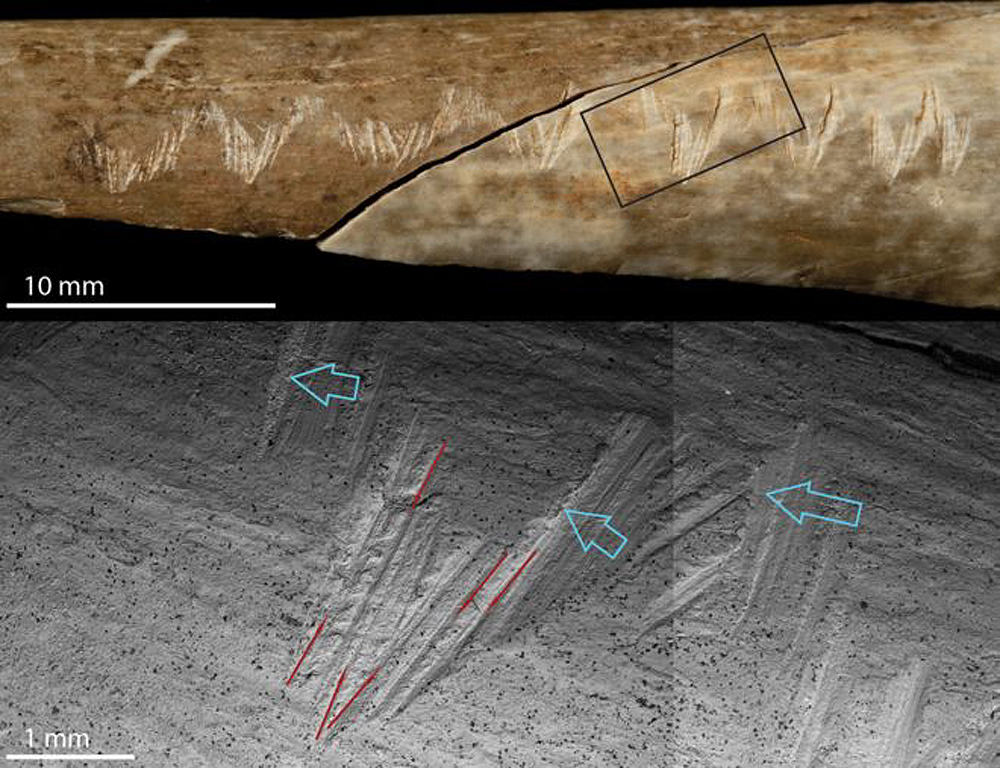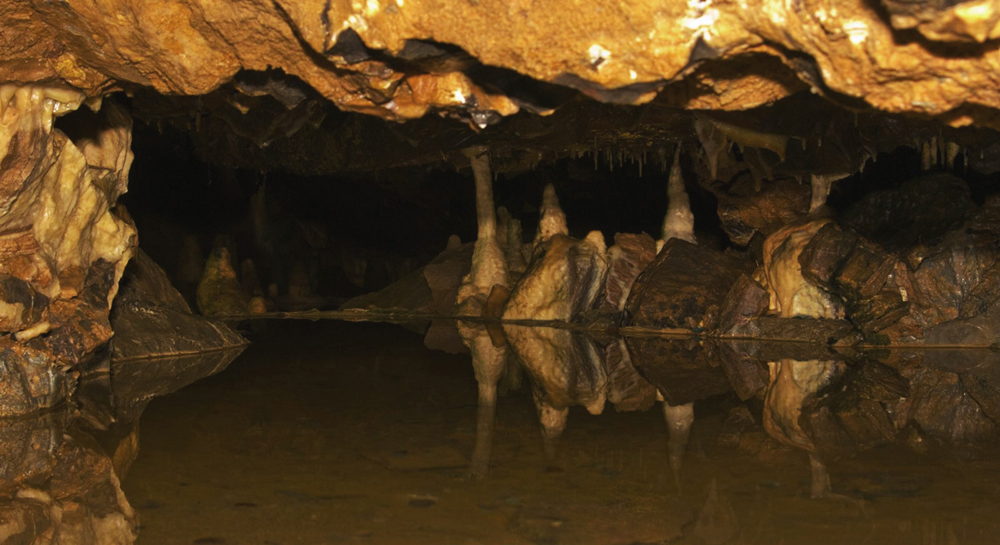


An article on the bbc.co.uk - Cannibals engraved bones of the dead - reports on the series of zig-zag marks on a human bone found in a UK cave which show evidence of a cannibalistic ritual that took place some 15,000 years ago.

The bones show marks which are not teeth marks. Image: Trustees of the NHM.
Scientists have known that a cannibal practice operated at Gough's Cave in Somerset, but were unsure whether the practice of eating other people had any symbolic significance. Reporting in the journal Plos One, researchers now claim that the unusual cuts on a forearm bone are deliberate.
UK cave reveals cannibalistic ritualhttps://t.co/aLHYMkD2fs #NaturalHistoryMuseum #archaeology #Mendips #GoughsCave pic.twitter.com/9Gvnb3Llvo
— Bradshaw Foundation (@BradshawFND) August 11, 2017
Gough's Cave is situated in the Cheddar Gorge, a deep limestone canyon on the southern edge of the Mendip Hills.
An Upper Palaeolithic engraved human bone associated with ritualistic cannibalism
Silvia M. Bello, Rosalind Wallduck, Simon A. Parfitt, Chris B. Stringer
Plos One, published August 9, 2017
The researchers describe the cuts not as butchery nor teeth markings, but as deliberate zig-zags which appear to match designs used on other engraved objects from the same time period.
Silvia Bello from London's Natural History Museum explains that the engraved motif on the Gough's Cave bone is similar to engravings observed in other Magdalenian European sites. But of special interest is the choice of raw material (human bone) and the cannibalistic context in which it was produced; the sequence of modifications performed on this bone suggests that the engraving was a purposeful component of the cannibalistic practice, rich in symbolic connotations. It clearly points to symbolic ritual.

Gough's Cave. Image: Kevin Wheal.
Gough's Cave is situated in the Cheddar Gorge, a deep limestone canyon on the southern edge of the Mendip Hills. The cave is best known for the discovery in 1903 of 'Cheddar Man', the complete skeleton of a male individual dating to about 10,000 years ago.
In 2011, Dr Bello and colleagues presented three skull cases that they said could have been used as drinking vessels.
Cannibalistic behaviour in Gough's Cave:
http://www.bradshawfoundation.com/news/origins.php?id=Cannibalistic-behaviour-in-Gough-s-Cave
Comment
by Bradshaw Foundation
Monday 04 December 2023
by Bradshaw Foundation
Friday 30 June 2023
by Bradshaw Foundation
Thursday 06 April 2023
by Bradshaw Foundation
Thursday 24 November 2022
by Bradshaw Foundation
Tuesday 27 September 2022
by Bradshaw Foundation
Thursday 08 September 2022
by Bradshaw Foundation
Tuesday 19 July 2022
by Bradshaw Foundation
Monday 06 June 2022
by Bradshaw Foundation
Friday 11 March 2022
by Bradshaw Foundation
Wednesday 02 March 2022
by Bradshaw Foundation
Thursday 26 August 2021
by Bradshaw Foundation
Monday 16 August 2021
by Bradshaw Foundation
Tuesday 06 July 2021
by Bradshaw Foundation
Thursday 06 May 2021
by Bradshaw Foundation
Thursday 06 May 2021
by Bradshaw Foundation
Tuesday 16 March 2021
by Bradshaw Foundation
Monday 04 December 2023
by Bradshaw Foundation
Friday 30 June 2023
by Bradshaw Foundation
Thursday 06 April 2023
by Bradshaw Foundation
Thursday 24 November 2022
by Bradshaw Foundation
Tuesday 27 September 2022
by Bradshaw Foundation
Thursday 08 September 2022
by Bradshaw Foundation
Tuesday 19 July 2022
by Bradshaw Foundation
Monday 06 June 2022
by Bradshaw Foundation
Friday 11 March 2022
by Bradshaw Foundation
Wednesday 02 March 2022
by Bradshaw Foundation
Thursday 26 August 2021
by Bradshaw Foundation
Monday 16 August 2021
by Bradshaw Foundation
Tuesday 06 July 2021
by Bradshaw Foundation
Thursday 06 May 2021
by Bradshaw Foundation
Thursday 06 May 2021
by Bradshaw Foundation
Tuesday 16 March 2021
Friend of the Foundation











